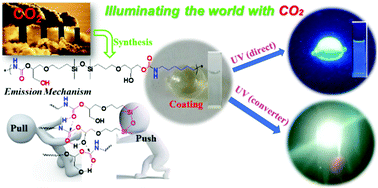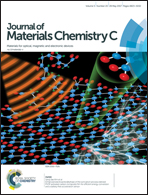Fluorescent linear CO2-derived poly(hydroxyurethane) for cool white LED†
Abstract
The fluorescent properties of a linear poly(hydroxyurethane) (P1) from carbon dioxide, siloxane (Si–O–Si)-containing bisepoxide and diamine are described. P1 showed strong photoluminescence with a quantum yield of up to 23.6%, high photostability, and broad absorption and emission spectra either in bulk or solution. The flexibility and hydrophobicity of the Si–O–Si linkage in P1 were utilized to drive the intense aggregation of hydroxyurethane chromophores which combined with the hydrogen bonding interactions lead to strong photoluminescence. P1 was used as a single phosphor film for fabricating a low voltage, cool white light-emitting diode device with competitive performances.



 Please wait while we load your content...
Please wait while we load your content...